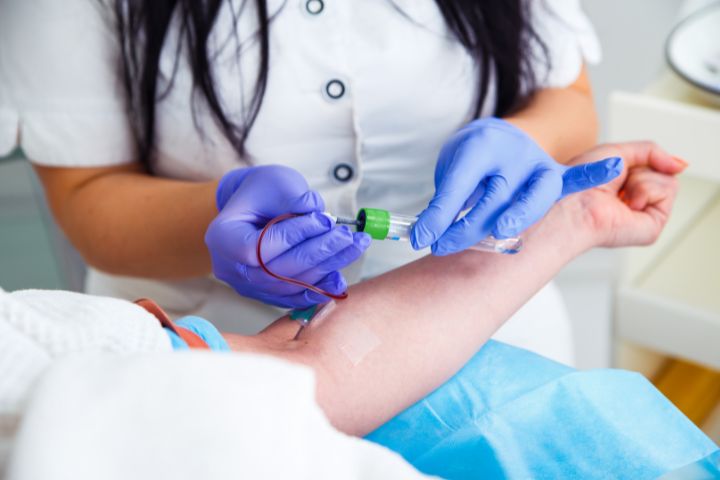Excitement About Northeast Medical Institute - New Haven Campus Phlebotomy Course & Cna Class
Excitement About Northeast Medical Institute - New Haven Campus Phlebotomy Course & Cna Class
Blog Article
10 Simple Techniques For Northeast Medical Institute - New Haven Campus Phlebotomy Course & Cna Class
Table of ContentsThe Ultimate Guide To Northeast Medical Institute - New Haven Campus Phlebotomy Course & Cna ClassGet This Report on Northeast Medical Institute - New Haven Campus Phlebotomy Course & Cna ClassFascination About Northeast Medical Institute - New Haven Campus Phlebotomy Course & Cna ClassGetting My Northeast Medical Institute - New Haven Campus Phlebotomy Course & Cna Class To WorkThe 15-Second Trick For Northeast Medical Institute - New Haven Campus Phlebotomy Course & Cna ClassNortheast Medical Institute - New Haven Campus Phlebotomy Course & Cna Class Things To Know Before You Get This
The usage of such devices must be accompanied by various other infection avoidance and control practices, and training in their use.For setups with low sources, expense is a driving aspect in procurement of safety-engineered tools - CNA Classes. Where safety-engineered tools are not offered, skilled use a needle and syringe is appropriate. Unexpected exposure and details information concerning an incident ought to be taped in a register. Support solutions should be promoted for those who undergo unintended exposure.
labelling); transport problems; analysis of results for medical monitoring. In an outpatient division or facility, supply a specialized phlebotomy cubicle containing: a tidy surface with two chairs (one for the phlebotomist and the other for the patient); a hand laundry container with soap, running water and paper towels; alcohol hand rub. In the blood-sampling space for an outpatient division or clinic, offer a comfortable reclining couch with an arm rest.
Getting The Northeast Medical Institute - New Haven Campus Phlebotomy Course & Cna Class To Work
Make sure that the indications for blood tasting are clearly specified, either in a created procedure or in documented guidelines (e.g. in a lab type). Accumulate all the devices required for the treatment and location it within risk-free and simple reach on a tray or cart, ensuring that all the products are plainly noticeable.
Present on your own to the person, and ask the patient to mention their complete name. Inspect that the research laboratory form matches the client's identity (i.e. match the patient's information with the research laboratory form, to ensure precise recognition).
Make the patient comfortable in a supine position (preferably). Place a clean paper or towel under the individual's arm. Review the test to be executed (see Annex F) and obtain verbal approval. The patient has a right to decline an examination at any moment prior to the blood sampling, so it is vital to make certain that the patient has actually recognized the procedure.
Everything about Northeast Medical Institute - New Haven Campus Phlebotomy Course & Cna Class
Extend the individual's arm and inspect the antecubital fossa or forearm. Find a capillary of an excellent size that is visible, straight and clear. The layout in Area 2.3, reveals usual positions of the vessels, yet many variants are feasible. The median cubital capillary exists between muscle mass and is usually the most very easy to penetrate.
DO NOT insert the needle where capillaries are diverting, since this boosts the possibility of a haematoma. Finding the vein will assist in figuring out the right size of needle.
Haemolysis, contamination and existence of intravenous liquid and medicine can all modify the results (39. Nursing staff and physicians might access central venous lines for samplings adhering to methods. However, samplings from central lines carry a threat of contamination or wrong research laboratory examination outcomes (https://www.reverbnation.com/artist/marvingordon). It is acceptable, yet not ideal, to attract blood specimens when initial presenting an in-dwelling venous device, prior to connecting the cannula to the intravenous liquids.
Facts About Northeast Medical Institute - New Haven Campus Phlebotomy Course & Cna Class Uncovered
Enable the area to dry. Failing to allow enough contact time enhances the threat of contamination. DO NOT touch the cleaned up site; specifically, DO NOT position a finger over the capillary to guide the shaft of the subjected needle. It the website is touched, repeat the disinfection. Carry out venepuncture as follows.
Ask the individual to form a fist so the capillaries are more prominent. Get in the vein swiftly at a 30 degree angle or less, and continue to introduce the needle along the vein at the most convenient angle of entry - CNA Classes. When sufficient blood has actually been collected, launch the tourniquet prior to withdrawing the needle
Some Ideas on Northeast Medical Institute - New Haven Campus Phlebotomy Course & Cna Class You Should Know
Take out the needle delicately and use mild pressure to the website with a tidy gauze or completely dry cotton-wool round. Ask the individual to hold the gauze or cotton woollen in location, with the arm extended and raised. Ask the person NOT to bend the arm, because doing so triggers a haematoma.

Northeast Medical Institute - New Haven Campus Phlebotomy Course & Cna Class for Dummies
Do not press the syringe plunger due to the fact that additional pressure raises the threat of haemolysis. Where possible, maintain televisions in a rack and move the rack in the direction of you. Infuse downwards into the proper coloured stopper. DO NOT get rid of the stopper because it will launch the vacuum. If the example tube helpful hints does not have a rubber stopper, infuse extremely slowly into the tube as lessening the stress and speed made use of to move the specimen reduces the risk of haemolysis.

Report this page